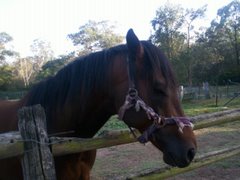(From a thread on Straightegyptians.com)
Diane asked the following:
A list of titles added to a library...
The baby human
The anti-bias approach in early childhood
Family in transition
Curriculum controversies
The art of teaching primary science 12 to 18
Anger management
Assertiveness
Essentials of strategic project management
Children, families & communities
Computers, thinking and learning
Designing a thinking curriculum
Coat of many pockets
Formative assessment in the secondary classroom
Schooling for the knowledge era
Totally wicked!
Miss Lily's fabulous pink feather boa
Teaching mathematics to all children
How to talk to children about art
The psychology of B.F. Skinner
Just Stop and Think!
Not you again!
What else can I do with you?
Seven steps to ICT integration
The millennial adolescent
Learners with mild disabilities
The Differentiated Classroom
Right book right time
Teaching boys
The psychology of B.F. Skinner
Sociology of family life
Biomechanics and Exercise Physiology: quantitative modeling
Seeing red
Managing conflict with confidence
Storytelling in the classroom
Race, culture and schooling
Extraordinary performance from ordinary people
Learning to slow down and pay attention
Anyone like to suggest an alternative title to these with the Arabian Horse as the theme?
egThe baby horse
The anti-bias approach in Arabian Horse BreedingBreeding in transition
The art of teaching analytical Arabian Horse conformation
Foals, families & communities
Miss Lily's fabulous pink feather boa
A few could always remain - Anger managementAssertiveness etc
To which I replied:
The baby human - Imprint training
The anti-bias approach in early foalhood
The herd in transition
Curriculum controversies in Judging
The art of teaching mammalian science 12 to 18
Anger management (for humans)
Assertiveness (for Arabian horses)
Essentials of strategic project management of Breeding Programmes
Children, families, strains & communities of Arabian Horses
Computers, thinking and learning to outsmart your Egyptian Arabian
Designing a thinking curriculum for Egyptian Arabians
Coat of many pockets filled with carrots
Formative assessment in the secondary classroom at Pony Club
Dressage Schooling for the knowledge era
Totally wicked! Carrots recipes
Miss Lily's fabulous pink feather boa for reining horses
Teaching mathematics to all children, families, strains and communities of Arabian horses
How to talk to children about artistically braiding tails and manes
The psychology of B.F. Skinner for thinking riders
Just Stop and Think - does your horse really need that carrot?
Not you again! See these teeth?
What else can I do with you besides lawn ornamentation
Seven steps to ICT integration for Egyptian Arabians
The millennial adolescent two year old colt
Learners with mild disabilities - both human and other animals
The Differentiated Classroom - both human and other animals
Right book right time - duck.
Teaching boys not to play chicken with the stallions
Sociology of horse herd life
Biomechanics and Exercise Physiology: quantitative modeling after the rider has fallen off - again
Seeing red - before your horse shies.
Managing conflict with confidence - for Arabian horse owners
Storytelling in the classroom - how to learn truth from fiction
Race, culture and schooling in the dressage ring
Extraordinary performance from ordinary people - New horse ownership
Learning to slow down and pay attention before you get bitten.
I thought this might add a chuckle to your life.
 Blue Bell Babe in her blue rug and new red halter.
Blue Bell Babe in her blue rug and new red halter.

